15 Shocking Photos Of Punishments And Executions Practiced In China In The 19th Century
Many associate China with the tea ceremony, with unique architecture, original cuisine, wushu and wise thoughts of Confucius. But there is also a special culture in the Celestial Empire - the culture of punishments and executions. Our review contains 15 real shocking photos of people who have experienced all the delights of the Chinese punitive system.
Attention! The post contains violent and shocking images. Sensitive and faint of heart is better to refrain from viewing.
(Total 15 photos)
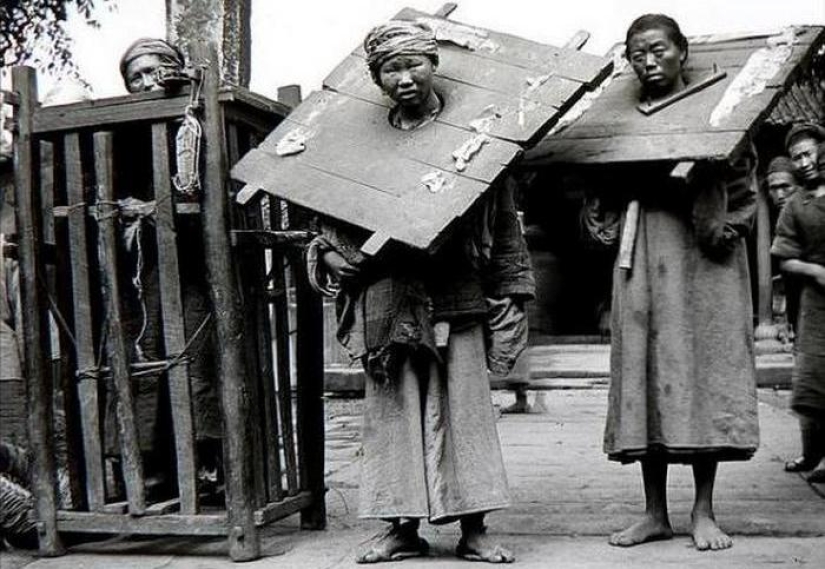 Source: culturalologia.ru
Source: culturalologia.ru

1. Shocking Chinese justice.
As early as the beginning of the 20th century in China, when it came to punishing criminals, the death penalty with slow killing was preferred. Often, the relatives of the offender themselves asked for the death penalty, since being in prison was an unbearable burden on their shoulders.
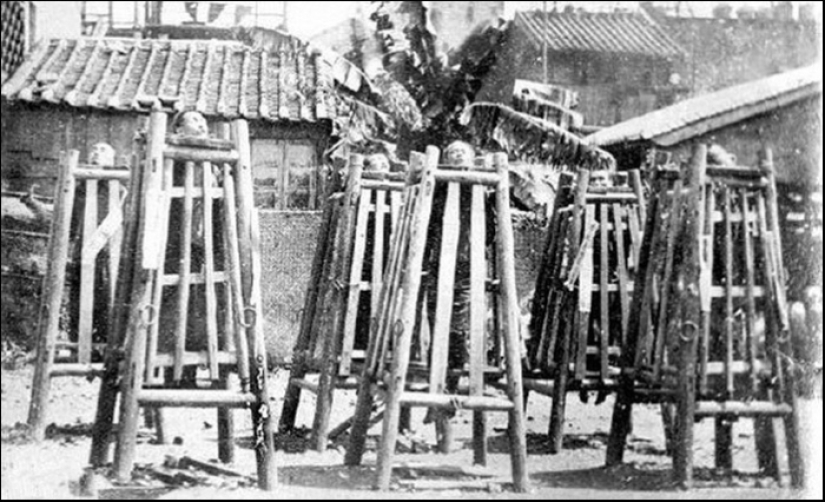
2. Bamboo cages for people.

3. Execution on bamboo poles.
Of course, over the past few decades, the regimes in Asian countries have become somewhat softer. But shocking traditions and "spiritual bonds" remain the cornerstone of this society. And today, for freethinking (by the way, unauthorized access to Facebook is regarded as such a misdemeanor), the head of a creakle will no longer be cut off, but they can be put on a chain in a casemate.
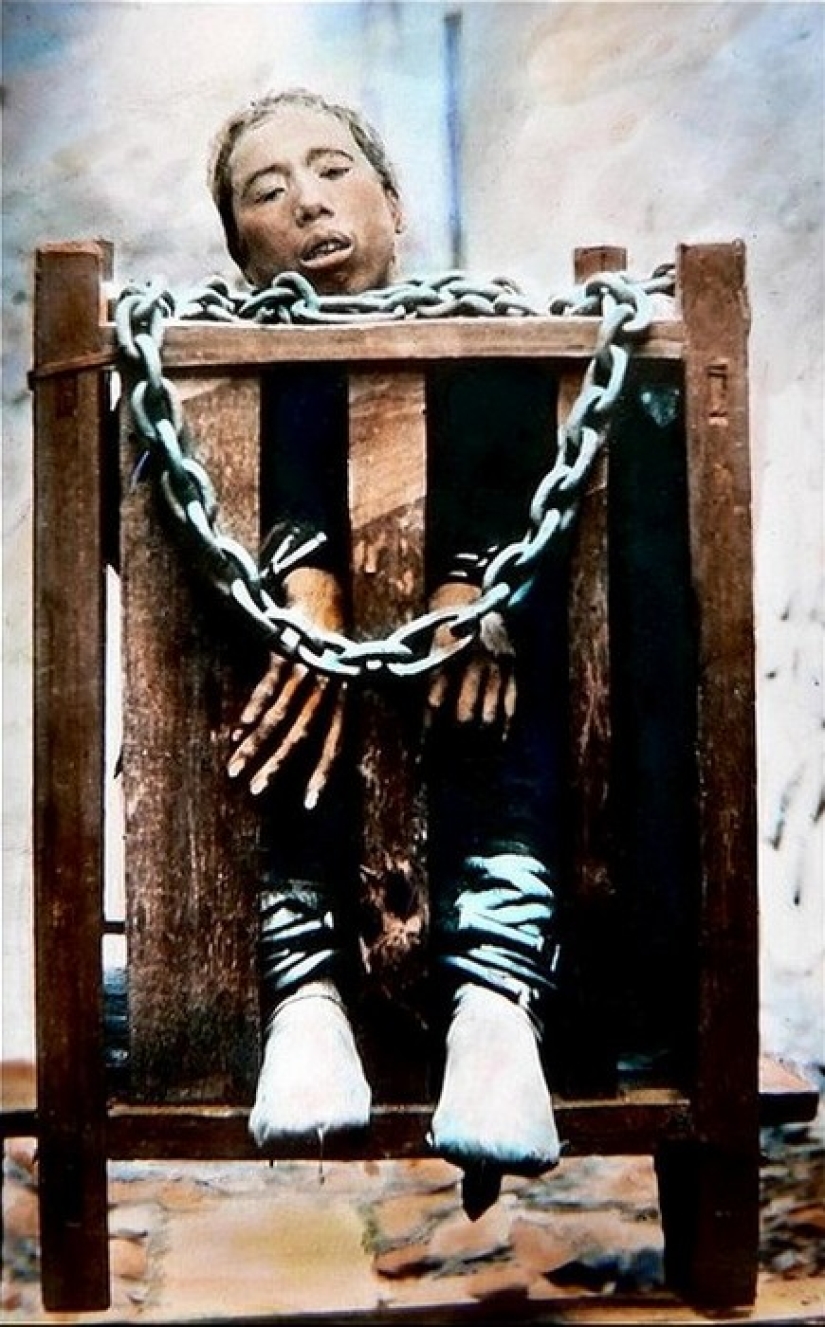
4. Man on a chain.
The punitive system of China 100-120 years ago differed from the European one in its voluntarism. The emperor's decrees on punishments were issued only when it came to the most malicious state crimes: the murder of an official, surrender, etc. All other crimes and misdemeanors were at the mercy of local judges and authorities, and they considered it their duty to come up with a sophisticated method of reprisal.
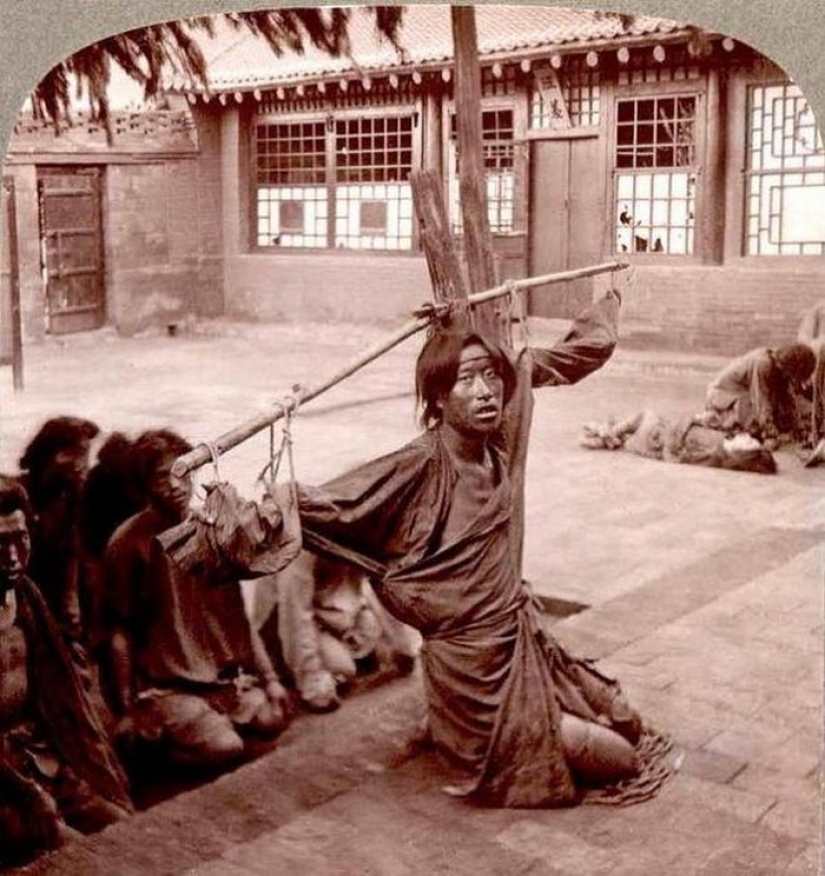
5. Crucifixion in Chinese.
Cutting off the nose, removing the kneecaps, branding, cutting off the ears and feet were widely used in China to punish criminals. Criminals were burned at the stake, their ribs were broken, they were torn apart by chariots, and sometimes they were put on their knees and tied their hands to a cross and left in this position under the rays of the sun.
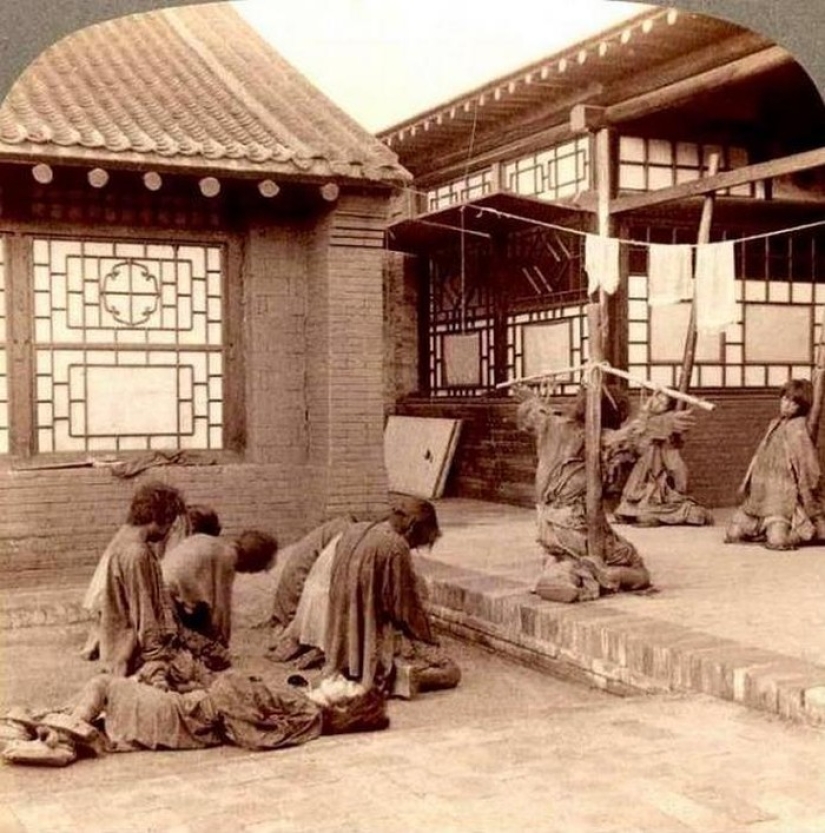
6. Man on the cross.
Especially popular was burying alive in the ground. Only the head remained on the surface. It was believed that such a death would be a good edification to other people. Castration was also widely spread in China, after which most of the unfortunate people died from blood poisoning.
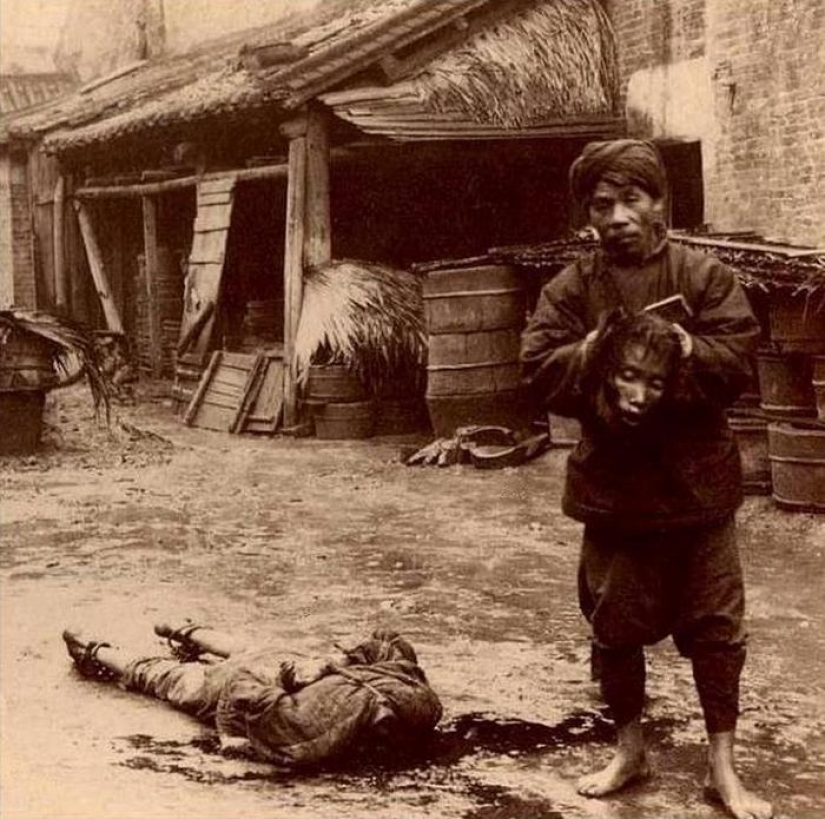
7. Headless to the afterlife.
A wide variety of tools were used to carry out punishments: knives and saws, axes and axes, chisels and drills, whips, sticks and needles.

8. To intimidate citizens.
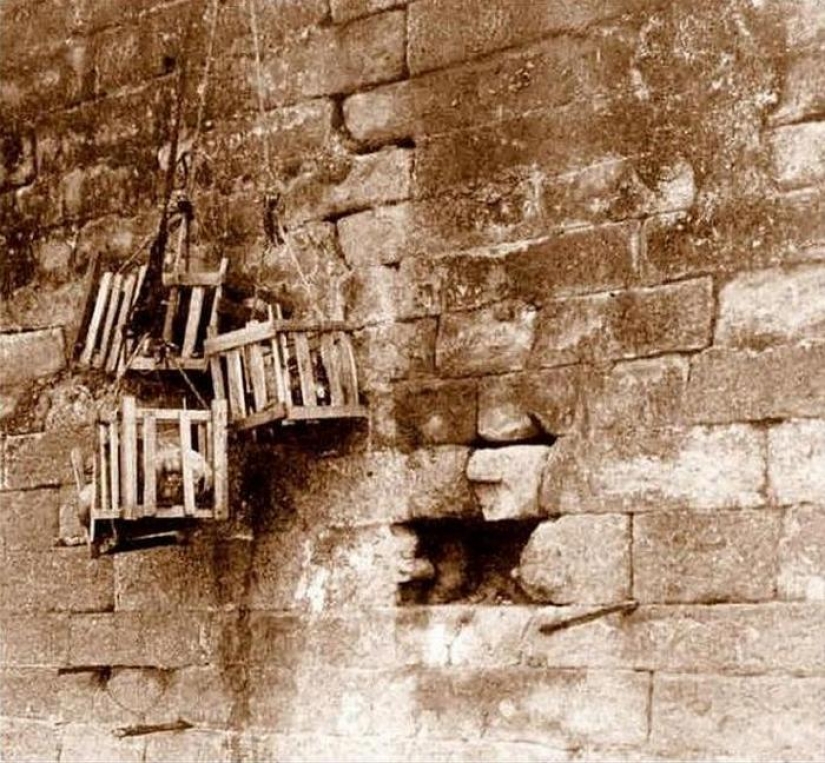
9. In an effort to make the punishment heavier, the judges came up with the “Five Torture” execution, which assumed that the criminal was first branded, because they would cut off his legs and arms, then beat him with sticks, cut off his head and put it on public display.
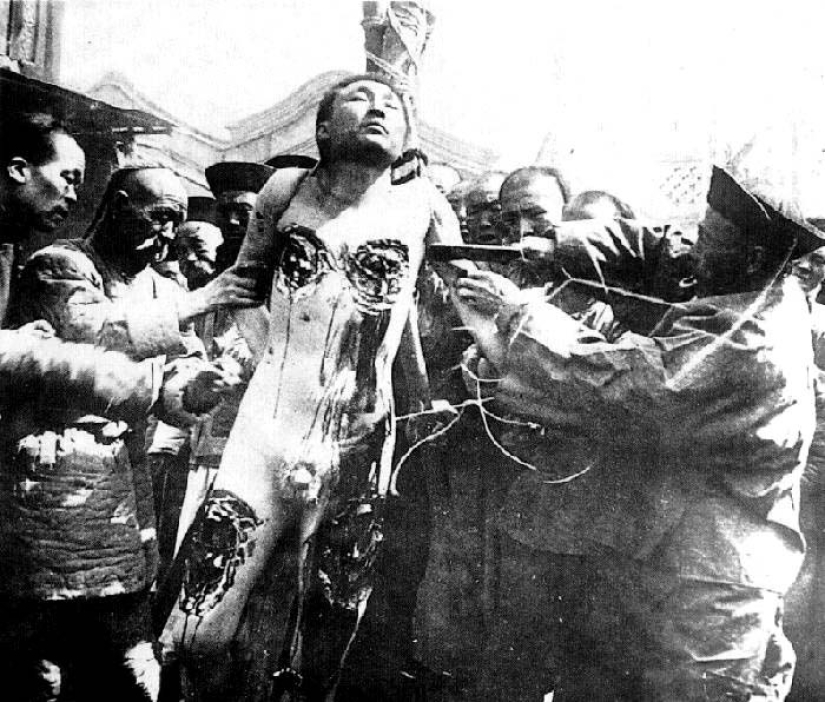
10. Shocking "Five Tortures".
In prisons, which were an ordinary earthen pit, they were kept, as a rule, for a short time. The family had to pay for the maintenance of the convict, but only a small part of society could afford it.
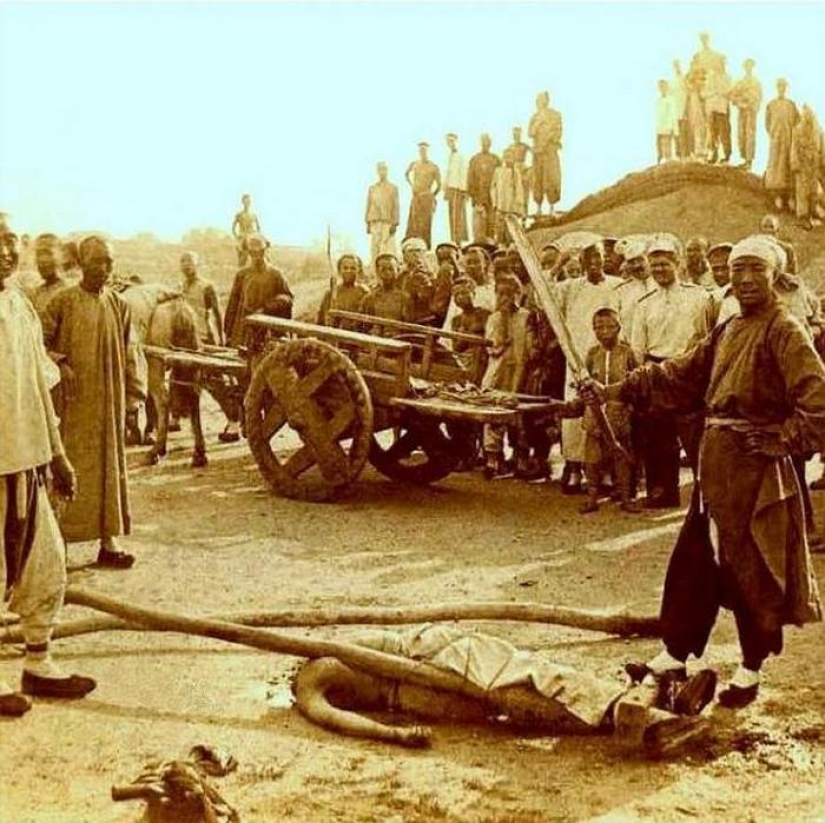
11. After the execution.
For such offenses as insulting an official, stealing, etc., “jia” blocks were put on a person. Such punishment was very common, since it did not require imprisonment. Sometimes, to reduce the cost of punishment, several prisoners were chained in one neck block. But even in this case, his relatives had to feed the criminal.
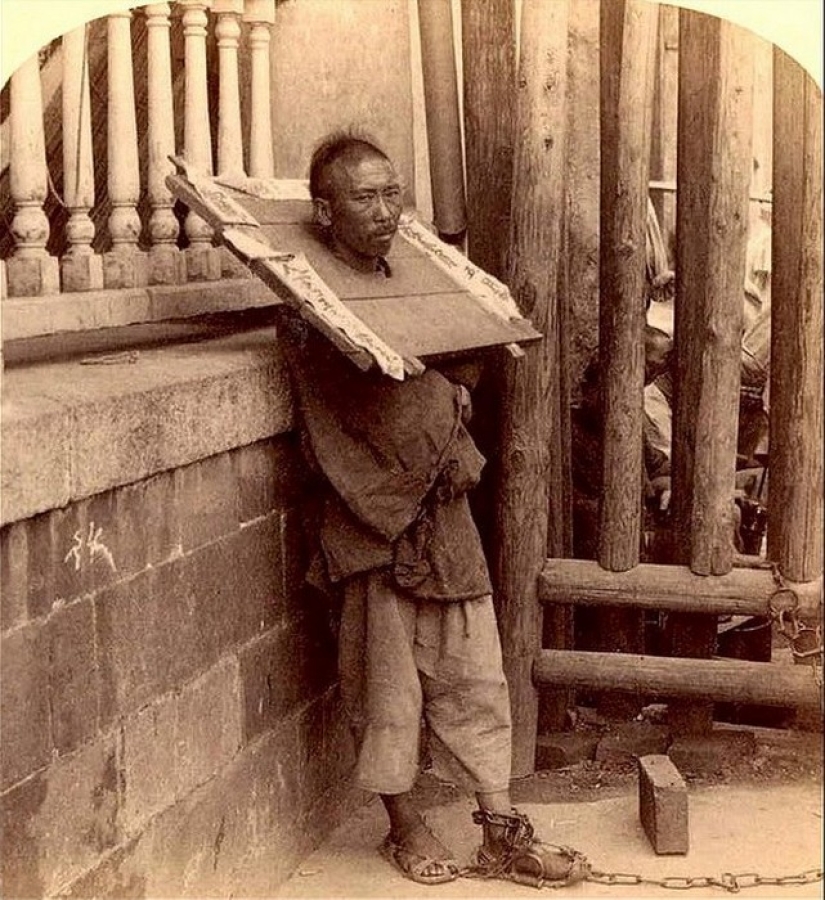
12. On the chain and in the blocks.
The most terrible Chinese execution was considered to be beheading. The fact is that the Chinese believed that in the afterlife they would look the same as at the time of death. Therefore, the relatives of the criminal were even ready to give a bribe so that any other execution would be applied to him. As an alternative, strangulation and the so-called cage were used.
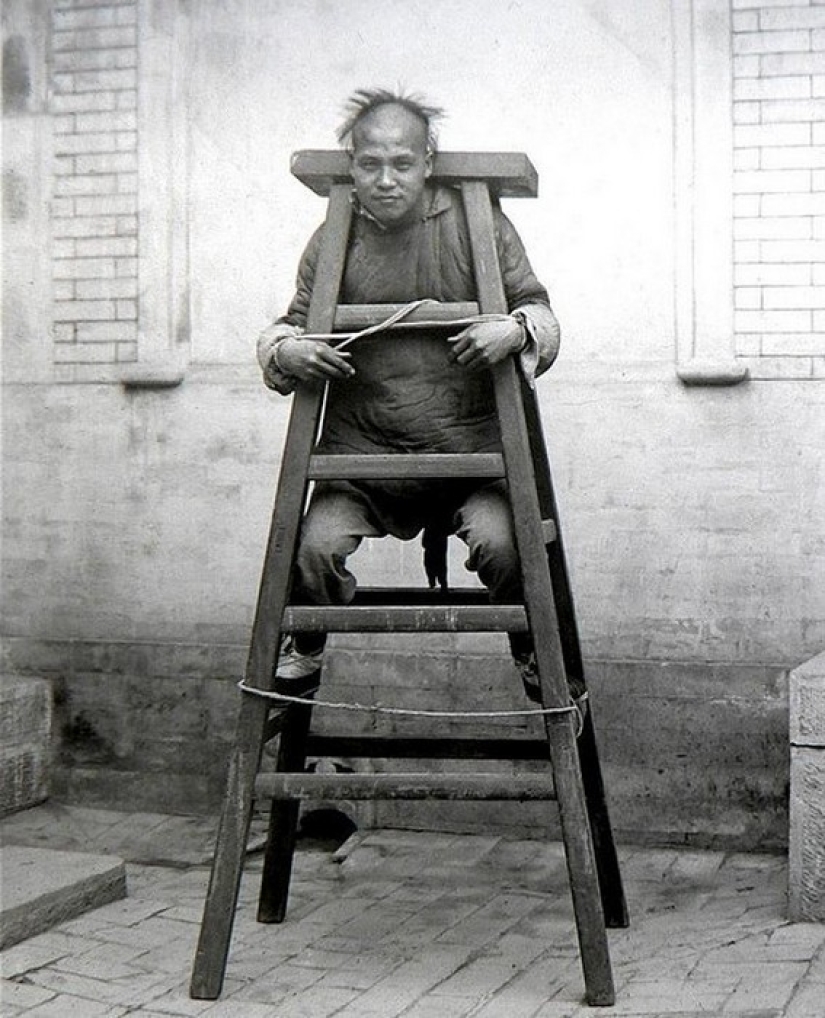
13. A man in stocks on a chain.
When it came to strangulation, the criminal was tied to a post with a rope around his neck. The ends of the rope were in the hands of the executioners, who slowly wound the rope around special sticks, strangling the unfortunate. The strangulation sometimes turned into real torture, as the executioners loosened the rope from time to time, allowing the victim to take a convulsive breath, and then tightened the noose again.
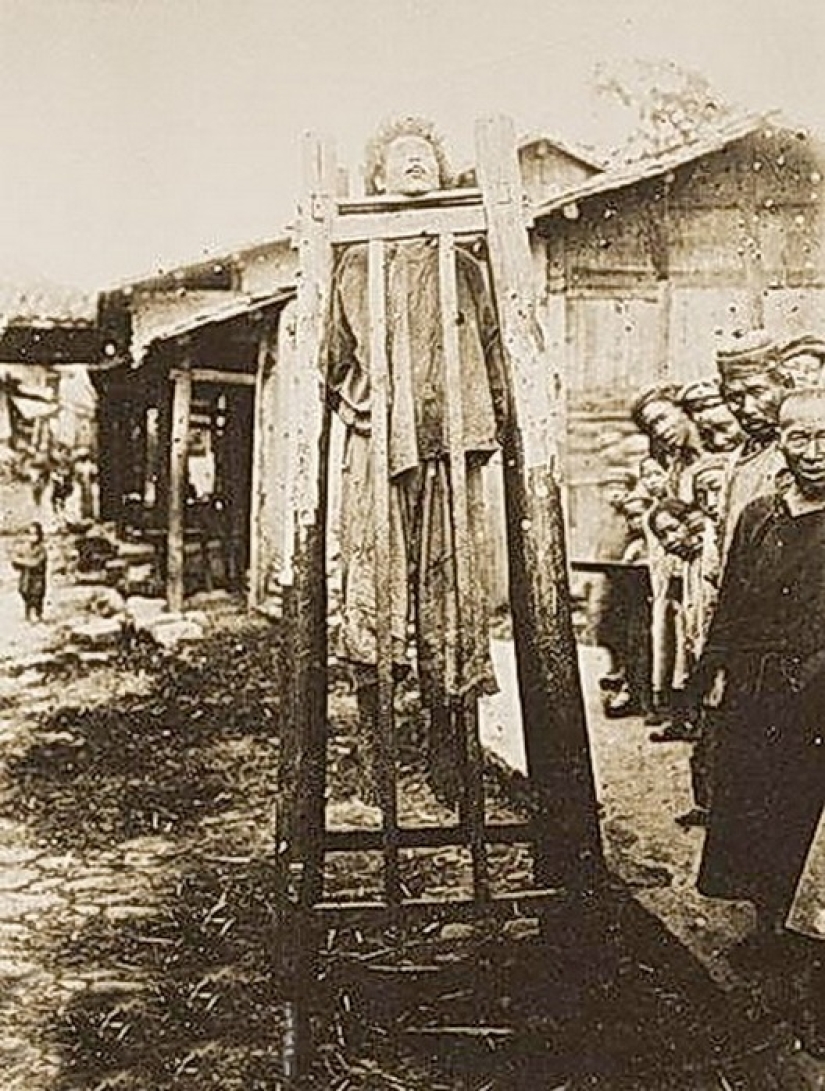
14. Standing pads.
The Chinese cage (li-jia, or "standing blocks") was a neck block, which was fixed on top of the cage from wooden or bamboo poles at a height of about 2 meters. The convict was placed in a cage, and tiles or bricks were placed under his feet, which were gradually removed. As the executioner pulled out another brick from under the feet of the unfortunate, he hung with his neck in the block. This suffocation could go on for months.
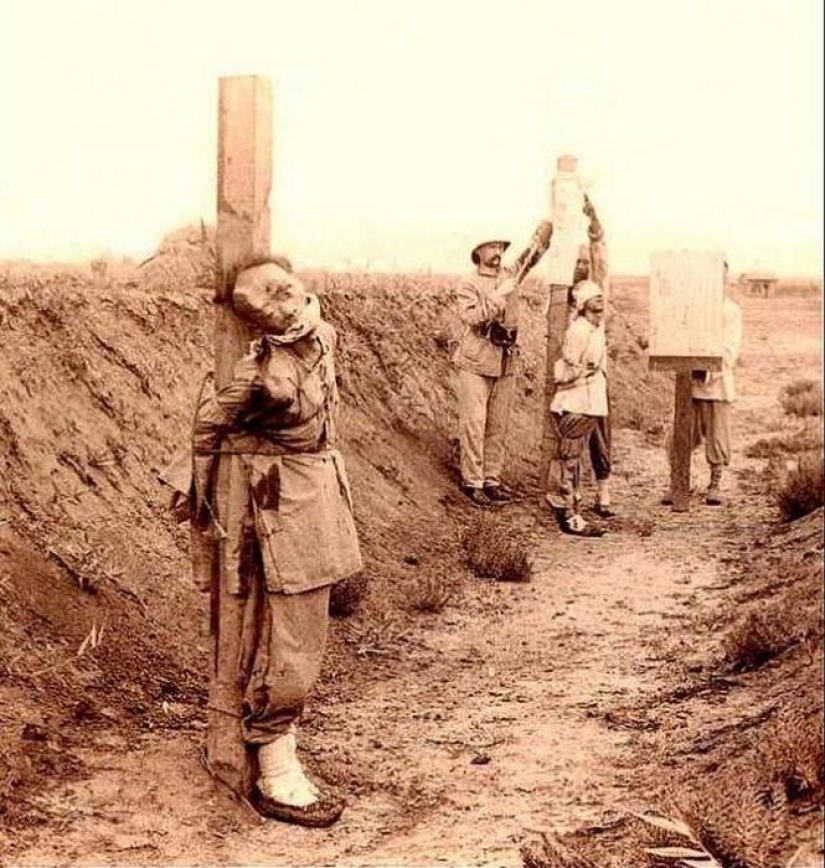
15. The execution of participants in the uprising of boxers.
Historians believe that the first civilized executions in China took place only in 1900, when the French occupiers shot the participants in the Boxer uprising.
Keywords: Execution | China | Criminals
Post News ArticleRecent articles

The phrase "money has no smell" is familiar to everyone. But not everyone knows that its origins date back to the distant ...

In 1991, on the Similaun glacier, which is located in the Tyrolean Alps, two German tourists discovered a perfectly preserved body ...
Related articles

Human intervention in the affairs of nature is extremely rarely successful. Especially a lot of trouble was brought to the ...

The sea is still, you are a woman or a man, if you can hold in their hands an army of 70,000. Chinese Chin si could — she started ...

We are sure that taking a nap in the afternoon for an hour or two is useful for everyone. Such a dream, if a person can afford it, ...

An ordinary photograph can be stored for many decades — it can be a photograph that will shake your faith in humanity, or a ...